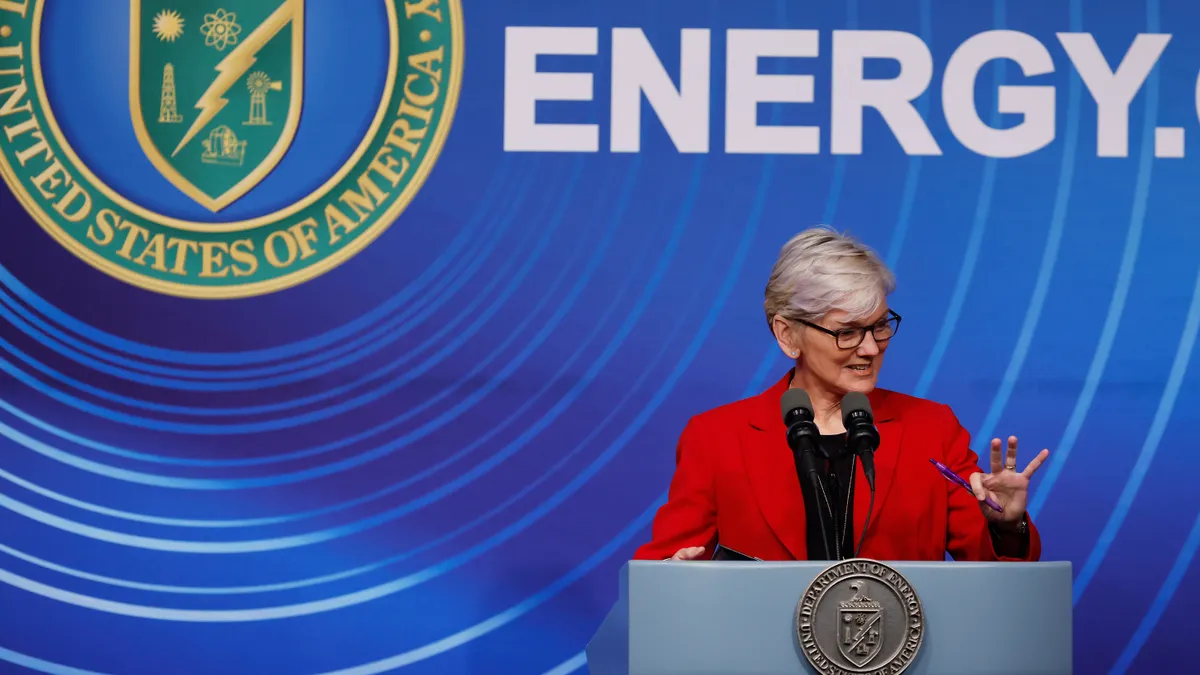Dive Brief:
- U.S. public and private sector businesses and government entities participating in the U.S. Department of Energy’s Better Buildings Initiative have collectively saved more than $18.5 billion through efficiency improvements and emission reduction measures, according to a new DOE report.
- The 2023 Better Buildings Initiative Progress Report said partners were able to realize savings of about 3.1 quadrillion British thermal units of energy, cutting about 189 million metric tons of carbon dioxide emissions — an amount roughly equivalent to the combined annual emissions of 24 million homes — and reducing their water use by over 16 billion gallons.
- Participants in the DOE’s Better Climate Challenge initiative have pledged to slash scope 1 and scope 2 greenhouse gas emissions by 50% in a decade and are averaging a 21% reduction in these emissions from their base year, the report notes.
Dive Insight:
Public and private organizations in the U.S. commit around $200 billion each year to power commercial buildings and an equal sum for industrial energy. However, an estimated 20% to 30% of the nation’s energy resources are squandered annually, the DOE said.
The Better Buildings initiative, launched in 2011, aims to drive improvements in energy efficiency, waste reduction, water conservation and emissions reduction across buildings and facilities. More than 900 organizations, including school districts, universities, state and local government bodies and nearly 30 Fortune 100 companies, currently participate in the program.
The Biden administration introduced a new initiative, the Better Climate Challenge in 2022 to prioritize GHG reductions across portfolios. In the first year of reporting results, those partners cut more than 20% of annual GHG emissions, on average, across nearly 850 million square feet of buildings and 2,100 industrial plants, the report states.
Bendix Commercial Vehicle Systems led the pack, with a 70% cut in GHG emissions across seven facilities from its 2018 base year, followed by HNI Corp., which achieved a 64% reduction across 99 facilities from its 2018 base year, the report says.
Commercial real estate entities achieved 107 million metric tons of annual CO2 reductions, despite decarbonization barriers that include financial stringency, tenant data access and regional energy grid complexities arising from local regulations and varying municipal targets, the report states.
Forty-eight retail, food services and grocery businesses spanning 1.2 billion square feet reduced their CO2 emissions by 89 million metric tons a year, while facilities in the hospitality and healthcare sectors achieved annual CO2 reductions of 52 million metric tons and 50 million metric tons, respectively.
In terms of energy use reduction, the Columbia Association in Columbia, Maryland, led with a 32% drop in energy use across 492,000 square feet from its 2012 base year, followed by Morehouse College in Atlanta, which cut its energy use 31% across 1.6 million square feet from its 2017 base year. Kohl’s reined in energy use by 30% across 112 million square feet from its 2008 base year.
“To meet President Biden’s ambitious climate goals, the public and private sector need practical pathways to reduce emissions while cutting costs — and that’s exactly what they get from DOE’s Better Building Initiative,” U.S. Secretary of Energy Jennifer M. Granholm said in an Oct. 23 release.
As part of a related Better Buildings Low Carbon Pilot, which has 65 partners, the DOE published a toolkit to share key insights from the participating organizations. These insights include action plan templates from the Columbia Association and the Los Angeles Unified School District, which outline strategies for energy efficiency, on-site renewable energy, grid interactivity, offsite renewables and renewable energy credits and offsets. The initiative hosts technology campaigns aimed at accelerating the adoption of efficient building technologies by providing technical assistance, resources and guidance on how to implement best practices. Technologies the campaigns have addressed include building envelopes, integrated lighting, smarter small buildings and IoT-upgradable lighting.
Correction: An earlier version of this story misidentified the location of Columbia Association. It is in Columbia, Maryland.
















